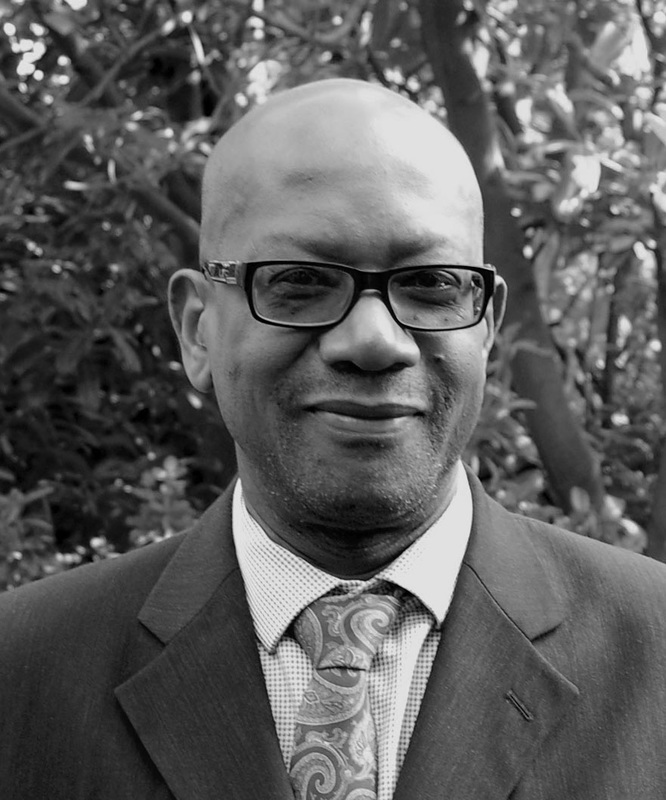Eugene Olive Palmer
1955
Jamaica
Jamaican – British
Eugene Olive Palmer was born in Kingston, Jamaica, and came to England as a child with his parents in 1966. Growing up, he was influenced by two different cultures and it is the memories of these and influences from them that have shaped his artistic career.
In the mid-1970s he completed an Art Foundation course in Sutton Coldfield, Birmingham, before going on to secure a BA (Hons) from Wimbledon School of Art in 1978, followed a few years later by a Teaching Certificate from Garnett College, London, and an MA in Painting from Goldsmiths College, in the mid-1980s.
Starting with the colourful and bright abstract paintings of the early to mid1980s, Palmer began exploring a variety of different areas of painting as his career progressed. Common themes in his work are explorations of cultural history and cultural identity.
His early career encompassed exhibiting at such venues as Bedford Gill Gallery, 198 Gallery, and the Duncan Campbell Gallery, and group exhibitions included the New
Contemporaries, Caribbean Expressions in Britain in the mid1980s and Black Art: Plotting the Course.
In the early 1990s, Palmer turned certain art and social conventions on their head, embarking on what art historian Eddie Chambers described as “the employment of classically derived aesthetics” which “resulted in a new body of work that was wholly unique amongst Britain’s Black artists”. Palmer challenged a painting tradition primarily constructed around a sense of romanticism, and the mythical notion of true Englishness, with landscape portraits historically used to portray the landowning elite.
His subjects were primarily his daughters and younger brother portrayed against luscious landscapes and brooding skies. Paintings such as Lulu Holding Stalks of Wheat (1993) and The Brother (1992) are imbued with a deeply personal dimension. Others such as The Letter (1992), depicts a man in smart 1950s attire, or Duppy Shadow (1993). Originating from African folklore, `duppy’ is a term for a ghost, commonly used in Jamaica.
These paintings of ordinary people exude empathy and grace. Elevating their subjects, they afford Black people the sort of respect and dignity often absent in contemporary British society. Equally, Jamaican art historian Petrine Archer-Straw (1956-2012)noted how Palmer’s paintings built on Ingrid Pollard’s hugely important photographic series Pastoral Interludes from 1987, by exploring the sense of alienation and displacement Black people feel in Britain when confronted with the countryside.
Because Black people historically settled in Britain’s urban areas, the countryside has been seen as mainly a white person space – or somewhere that is alien to Black people. Black people have also been made to feel unwelcome in rural areas and this is one of the reasons why Black people tend to frequent the British countryside less – in the UK, people of BAME background make up only 1% of visitors to national parks, for instance.
But Palmer points out that the countryside is in Black people’s ancestry and so it isn’t an alien space at all. Indeed, Black people and rural areas are irrevocably intertwined by the spectre of slavery. Nowhere was this legacy more evident than in Jamaica.
More significantly for Palmer, such thinking all too conveniently erased the spectre of the plantation from the British consciousness. For these reasons, Palmer’s portraits offer yet another level of meaning. They challenge how the English landscape tradition, like British history itself, remains largely insulated from the spectre of the slave plantation.
One of the most renowned figures of this tradition is John Constable, whose style is typified by The Hay Wain (1821), which depicts a rural scene on the River Stour between the English counties of Suffolk and Essex. Just two years after this, William Clark produced idealised drawings, Ten Views in the Island Antigua: in which are represented the process of sugar making (1823), which portrays Black slaves working in a rural environment.
These two different countrysides may seem a million miles apart, but both genteel depictions harbour a deception. Where Constable’s painting offers a onedimensional appreciation of the rural English idyll, Clark’s work shows slavery hidden in plain sight. In truth, Clark was sent to create these pictures and present what was happening in a positive light: essentially defending slavery and trying to show people back in Britain that it wasn’t too bad.
The Letter, 1992
By placing the Black subject within the landscape as Palmer does, he asks us to reconsider our assumptions and perceptions. And Palmer’s paintings reveal the extent to which a certain form of selective cultural amnesia continues to govern our understanding of British history.
Artist of the Day, selected by Sonia Boyce MBE, Flowers Gallery, London, 2014
https://en-academic.com/dic.nsf/enwiki/4133339
https://theconversation.com/eugene-palmer-a-black-british-artist-you-need-to-know-about-169219
https://artuk.org/discover/artists/palmer-eugene-b-1955#
https://www.eugenepalmer.co.uk
https://en.wikipedia.org/wiki/Eugene_Palmer_(artist)
https://en.wikipedia.org/wiki/Eugene_Palmer_(artist)


